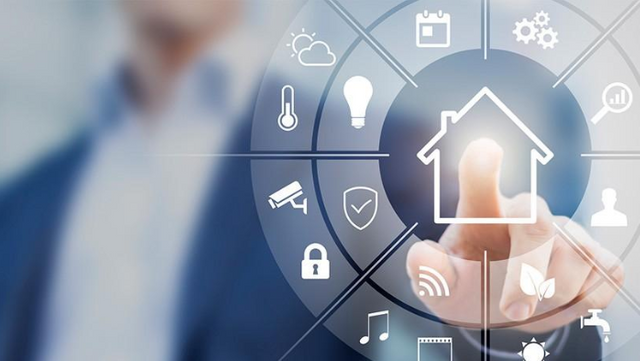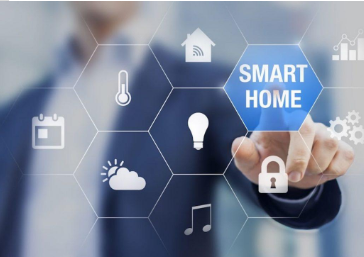Smart home Technology, also referred to as house automation, provides homeowners safety, comfort, convenience and energy efficiency by permitting them to control wise devices, frequently by an intelligent home program in their smartphone or other networked device. A component of the net of things (IoT), smart home systems and devices often operate with each other, sharing consumer use data among themselves and automating actions depending on the homeowners' tastes. Among the most touted benefits of home automation is providing reassurance to homeowners, permitting them to track their homes remotely, countering dangers like a forgotten coffee maker left or front door left unlocked.

Wise homes are also beneficial For the elderly, providing monitoring that can help seniors to stay at home safely and safely, as opposed to moving into a nursing home or needing 24/7 home care.
Unsurprisingly, smart houses can By way of instance, the moment you arrive home, your garage door will open, the lights will go on, the fireplace will roar along with your favorite tunes will begin playing on your own smart speakers.
The same holds for appliances. With an intelligent irrigation system, your yard will only be watered when necessary and with the specific quantity of water necessary. With home automation, energy, water and other resources are utilized more efficiently, which will help save natural resources and cash for the consumer.
Systems have struggled to become mainstream, in part because of their technical nature. A drawback of smart houses is their perceived complexity; some individuals have difficulty with technologies or will give up on it using the initial annoyance. Smart home producers and alliances are working on reducing complexity and enhancing the consumer experience to ensure it is beneficial and enjoyable for users of all sorts and technical levels.
Be truly effective, apparatus have to be interoperable regardless of who manufactured them, using the identical protocol or, at least, ones that are complementary. As it's such a nascent market, there's absolutely no gold standard for home automation nonetheless. But, standard alliances are partnering with producers and protocols to guarantee interoperability and a seamless user experience.
To infiltrate a wise device, they could potentially switch off the lights and alarms and unlock the doors, leaving a house defenseless into a break-in. Further, hackers could potentially get into the homeowner's network, resulting in worse attacks or data exfiltration. In addition to safety, many smart house opponents worry about information privacy. The report found most of customers are concerned about the privacy of their information shared with their smart home devices. While smart house device and platform makers may collect consumer information to better tailor their products or provide new and enhanced services to clients, trust and transparency are crucial to producers building trust with the consumers of the smart products. In simple smart home situations, events can be timed or triggered. Timed events are based on a clock, as an instance, lowering the blinds at 6:00 p.m., while triggered events rely on actions from the automatic system; for instance, once the operator's smartphone approaches the door, the wise lock unlocks and the wise lights go on. Machine learning and artificial intelligence (AI) are becoming ever more common in smart home systems, allowing home automation software to adapt to their surroundings. While every wise home is an intelligent building, not every wise building is an intelligent home. Enterprise, industrial, commercial and residential buildings of all shapes and sizes -- including offices, skyscrapers, apartment buildings, and multi-tenant offices and homes -- are deploying IoT technology to improve building efficiency, reduce energy costs and environmental impact, and ensure safety, in addition to improve occupant satisfaction.
Lots of the same smart Technologies used in the intelligent home are deployed in smart buildings, such as lighting, energy, heating and air conditioning, and safety and building access systems.
For example, an intelligent building can decrease energy costs using detectors that detect how many occupants are in a room. The warmth can automatically adjust, placing cool air on if sensors detect a complete conference room, or turning down the heat if everyone in the workplace has gone home for the day.
Wise buildings can also here; smart building components and the electrical grid can “speak" and “listen" to each other. With this technology, energy supply can be handled efficiently, maintenance can be dealt with proactively and power outages can be responded to more quickly.

Beyond these advantages, smart maintenance. Janitors, for example, can refill toilet supplies when use or maintenance and Failures can be called on building pipes, elevators and light systems.
referral link : https://t.me/DxChainBot?start=jhgx3h-jhgx3h
DxChain’s website : https://www.dxchain.com/
✅ @agathasteem, I gave you an upvote on your post! Please give me a follow and I will give you a follow in return and possible future votes!
Thank you in advance!
Downvoting a post can decrease pending rewards and make it less visible. Common reasons:
Submit
Congratulations @agathasteem! You received a personal award!
You can view your badges on your Steem Board and compare to others on the Steem Ranking
Vote for @Steemitboard as a witness to get one more award and increased upvotes!
Downvoting a post can decrease pending rewards and make it less visible. Common reasons:
Submit